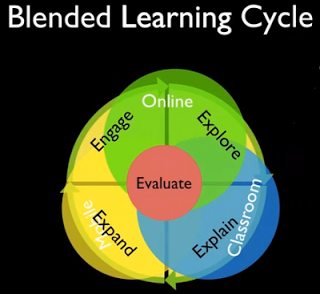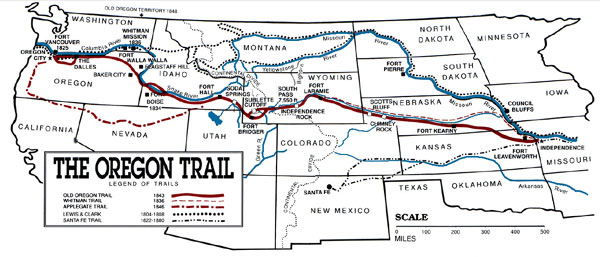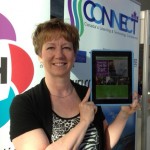What do you learn from these conversations with Anthony Capps?
This blog post covers a series of videos between Dr. Strange and Anthony Capps who is a 3rd Grade teacher in Baldwin County. I have watched each one and written a summary for each one about what I learned.
In this video, I got the chance to really learn what project based learning is all about. I learned that it is used to get children to take control of their own learning and have fun with it. Anthony Capps also talks about four main components to project based learning that make it successful. There has to be an authentic audience, student interest, involvement with the community, and it should be driven by content standards. As an example, he talked about a project he did with his class that required them to write letters to a congressman about whether women should serve in open combat or not. This gave them the chance to research historical women and use it to argue for which side they chose. They were able to make it their own and because it was relevant, they were interested. They then had the opportunity to revise and reflect on their work and they even got to choose which letters went to the congressman. I think his example was very enlightening on how effective this type of learning can be on students.

This video was a continuation of Project Based Learning Part 1. In this video, I learned that it is best to create opportunities for students to have some freedom to go beyond what you want. Capps gave an example of a project he did where the students had to write a narrative script as a child in Afghanistan. His class went beyond his expectations because he gave them freedom to write it from any point of view. Because the students had the opportunity to choose, they had more ownership of their work which is very important to learning. I learned from this video that the more students are engaged, the more they are learning. Projects like these also take a lot of planning and work, but Capps also points out that it is okay if something goes wrong. You just have to readjust the project to cover the content you want the students to learn.
This video taught me about a very helpful tool called ICurio. Basically, it is a search engine that allows students to safely search the web for audio, video, and texts. It has kid friendly buttons, a storage capacity for students, and can be used by any grade level. It also has a read aloud feature for students to use if necessary. I think this tool will be very useful in my classroom in the future. It is a lot easier to use technology in the classroom if you have tools like these that can filter what students have access to.
Discovery Education is a tool that can be used along with project based learning in order to enhance learning. It combines textual and visual elements in order to create a learning experience that uses more than one method to help a child learn. It brings the text to life and also brings experts into the classroom. This tool can help enrich research for the projects a teacher implements in the classroom. I learned from this video that it turns students into listener-watchers which can aid in comprehension of the material that is being covered.
This video gave me a list of tips for teachers created by Anthony Capps and Dr. Strange. The first one covered was that you have to be interested in learning yourself. Teachers are life-long learners and it can be very difficult to teach unless teachers are constantly learning too. The second tip was that work is not separate from play when you're a teacher. Teachers are learning how to teach in their free time. The third tip was that surprises always happen in the classroom, so it is important to be flexible. There is no way to predict what will happen, so teachers should always start with the end in mind. It's okay to change the schedule just as long as the students master the content at the end of the day. The fourth tip is to get students engaged. Teachers can only get students to learn if the students are engaged. Project based learning can really help with this. The final tip was to reflect and share work. Teachers should always reflect on their work in order to make it better the next time and it helps to share work with other teachers in order to get valuable feedback

This video was helpful on describing how to use technology in the classroom. Capps suggests that teachers should build on the use of technology each week. Teachers should focus on one part of the technology at a time and then add new things to it each week. This makes it easier for students to learn and it doesn't require taking a lot of time out of class to teach it. Capps also says that it is helpful for teachers to do the project themselves first so they know what kind of questions the students might ask. The video also describes the effect technology can have in the classroom. It's clean, shareable, and allows students to express themselves.Working with technology can also help teach problem solving to students. Teachers can figure out the kinks in the technology with their students.
In this video, I learned that lesson planning is four layers thick. First, teachers should think about how it fits in the year. Does it cover content standards? Then, they should devise it into unit projects. This unit is stretched from the time period of 6-8 weeks. Then teachers should figure out how they can get everything done for that unit each week. Finally, teachers should look at the daily schedule. They need to think about how they will deliver the content to the students and how they will measure what they learn. These four components should be used for each one lesson.



 In My Easter Basketball Tournament 2015, Bethany created an IMovie about a basketball tournament she attended. It was very well put together and contained pictures from her event along with captions that explained them. I thought it was better than what I could have put together at that age. I asked her for some tips on creating IMovies, but I have not heard back from her.
In My Easter Basketball Tournament 2015, Bethany created an IMovie about a basketball tournament she attended. It was very well put together and contained pictures from her event along with captions that explained them. I thought it was better than what I could have put together at that age. I asked her for some tips on creating IMovies, but I have not heard back from her.


 The next video (Blended Learning Cycle) I watched was by Mr. Paul Andersen, a high school AP Biology teacher in Bozeman, Montana. His teaching style is an online, mobile, and classroom learning blended style. Basically, his students use technology and regular classroom learning in order to get the most out of a lesson. His teaching also includes the five E's which are engage, explore, explain, expand, and evaluate. I learned that every lesson needs to start with a really good question that gets the students' attention. Then, students must investigate the question. In Andersen's classroom, they are then shown a video that goes into further instruction on the subject. After that they have reading to do in order to elaborate. He then sits with them one on one and asks them in depth questions that review what they learned. Finally, they have a summary quiz. I think that I will incorporate something like this in my classrooms because it's very efficient. The students grade themselves and that allows the teacher to have more free time to answer questions. It also allows the educator to ask probing questions.
The next video (Blended Learning Cycle) I watched was by Mr. Paul Andersen, a high school AP Biology teacher in Bozeman, Montana. His teaching style is an online, mobile, and classroom learning blended style. Basically, his students use technology and regular classroom learning in order to get the most out of a lesson. His teaching also includes the five E's which are engage, explore, explain, expand, and evaluate. I learned that every lesson needs to start with a really good question that gets the students' attention. Then, students must investigate the question. In Andersen's classroom, they are then shown a video that goes into further instruction on the subject. After that they have reading to do in order to elaborate. He then sits with them one on one and asks them in depth questions that review what they learned. Finally, they have a summary quiz. I think that I will incorporate something like this in my classrooms because it's very efficient. The students grade themselves and that allows the teacher to have more free time to answer questions. It also allows the educator to ask probing questions.
 In the videos I've listed above, I learned the ways Mrs. Cassidy uses technology in her first grade classroom. She first started incorporating technology into the classroom when she received 5 computers for her classroom. She started her learning by creating a webpage for her classroom that her students could go to in order to see announcements and find links she shared for research or educational games. She then expanded to blogging which she uses to show her students progress in all areas especially writing. Now, her students use wikis, video, Skype, and Nintendo DS on top of the webpage and blog. She also has a Twitter that she uses to build her Personal Learning Network and to collaborate with other professionals.
In the videos I've listed above, I learned the ways Mrs. Cassidy uses technology in her first grade classroom. She first started incorporating technology into the classroom when she received 5 computers for her classroom. She started her learning by creating a webpage for her classroom that her students could go to in order to see announcements and find links she shared for research or educational games. She then expanded to blogging which she uses to show her students progress in all areas especially writing. Now, her students use wikis, video, Skype, and Nintendo DS on top of the webpage and blog. She also has a Twitter that she uses to build her Personal Learning Network and to collaborate with other professionals. 





